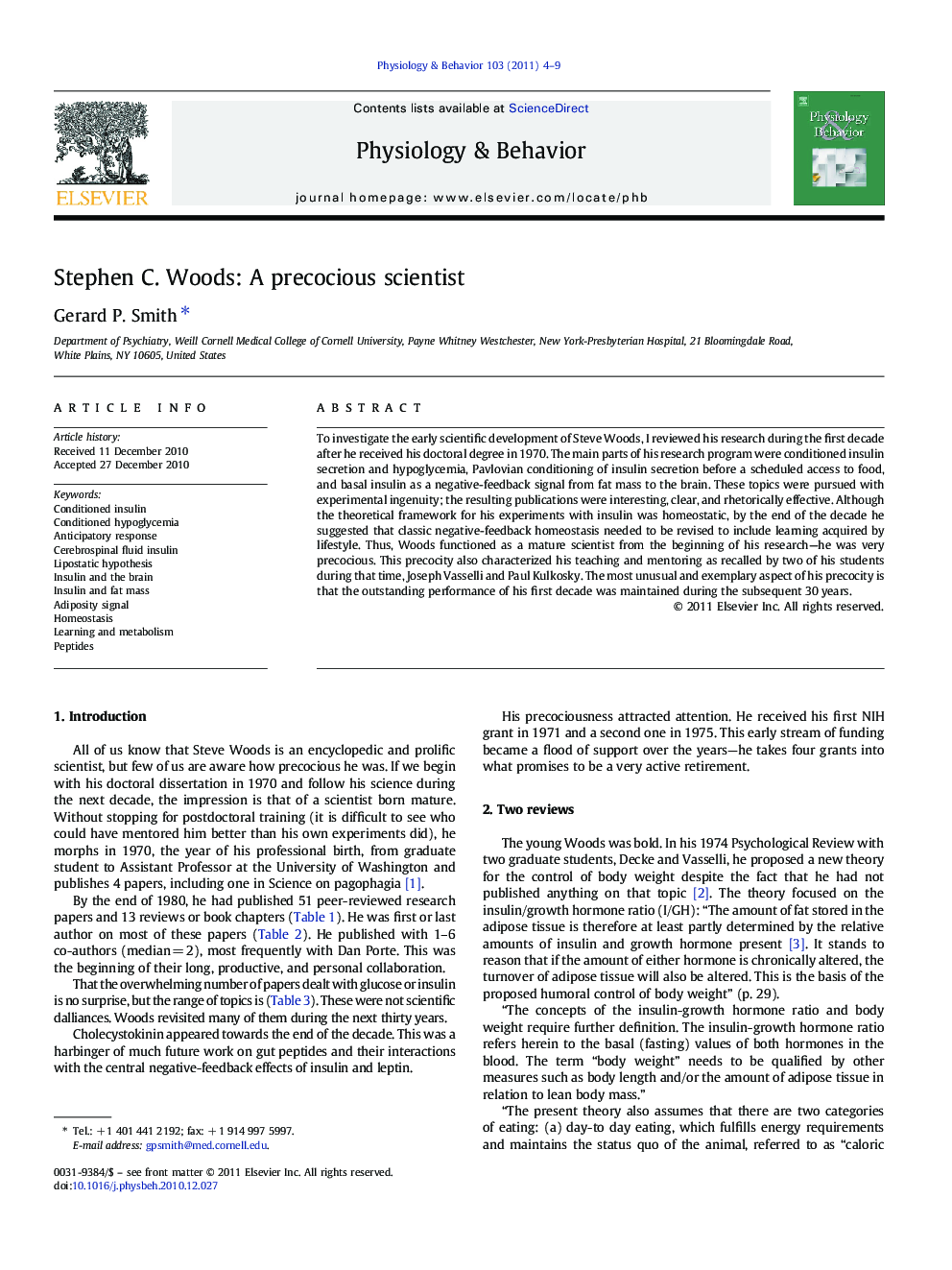| Article ID | Journal | Published Year | Pages | File Type |
|---|---|---|---|---|
| 5925799 | Physiology & Behavior | 2011 | 6 Pages |
To investigate the early scientific development of Steve Woods, I reviewed his research during the first decade after he received his doctoral degree in 1970. The main parts of his research program were conditioned insulin secretion and hypoglycemia, Pavlovian conditioning of insulin secretion before a scheduled access to food, and basal insulin as a negative-feedback signal from fat mass to the brain. These topics were pursued with experimental ingenuity; the resulting publications were interesting, clear, and rhetorically effective. Although the theoretical framework for his experiments with insulin was homeostatic, by the end of the decade he suggested that classic negative-feedback homeostasis needed to be revised to include learning acquired by lifestyle. Thus, Woods functioned as a mature scientist from the beginning of his research-he was very precocious. This precocity also characterized his teaching and mentoring as recalled by two of his students during that time, Joseph Vasselli and Paul Kulkosky. The most unusual and exemplary aspect of his precocity is that the outstanding performance of his first decade was maintained during the subsequent 30Â years.
Research Highlights⺠I reviewed the publications of Stephen C. Woods from his first postdoctoral decade. ⺠Woods was very productive. He published 64 papers including two important reviews. ⺠Woods began to work on themes that he pursued throughout his career. ⺠Woods was a fabled teacher and effective mentor. ⺠Thus, Woods was a very precocious scientist.
